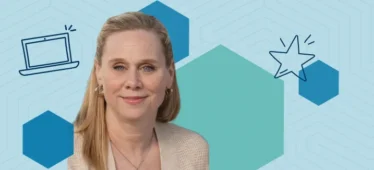The Science of Assessing Risk
The most formulaic approach to risk assessment is referred to by lenders as the “Four C’s” which are credit, capacity, collateral, and capital. Following is a brief description of each criterion.
Credit: Credit refers to a borrower’s creditworthiness, which is reflected in their credit score. Credit scores provide a standardized measure of how likely a borrower is to pay back their loan based on a combination of payment history, length of credit history, and other factors.
Capacity: Capacity refers to a borrower’s capacity to repay a loan based on their income, employment, and existing debt. Capacity is commonly calculated using debt-to-income ratio, by which monthly debt payments are added and divided by monthly income.
Collateral: Collateral refers to an asset that can be used for repayment should the loan obligations not be honored. Certain types of loans which are tied to physical goods are inherently collateralized and represent a lower overall risk.
Capital: Capital refers to a borrower’s equity in the product for which the loan was issued as well as their remaining liquid assets and financial reserves, which can be accessed if needed to repay the loan.
The Art of Assessing Risk
The Four C’s are fairly scientific in their assessment of risk. The better the credit, the greater the capacity, the stronger the collateral, the more capital, the less risky the loan. But recognizing the more nuanced aspects of risk, many lenders will include a fifth C, character.
Character moves beyond the ‘science’ of assessing risk, into the ‘art’ of assessing risk. It refers to things like reputation, integrity, and references. Character tells us that even when two borrowers have the same credit, capacity, collateral, and capital, they do not represent the same level of risk.
It is important to note that the same borrower might also represent different levels of risk for two different loans depending on how central and important a loan is to their quality of life, their identity, or their ability to make a living.
Categorizing Opportunities by Level of Risk
By viewing risk holistically, lenders can identify opportunities that are best suited to the intended risk profile of their lending portfolio. Loan opportunities can therefore be categorized in a continuum of risk, from the least risky to the most. Let’s look at four examples.
Accessibility vehicle modifications: Accessibility enhancements aid those with disabilities in utilizing their vehicles. While these modifications can be costly, they are often necessary in order for the borrower to complete essential tasks like driving to the store or commuting to work. Because they are central to quality of life and target a very specific population of borrowers, these loans represent an exceedingly low level of risk.
Commercial lawn equipment: Commercial lawn equipment loans are inherently revenue generating as they enable a landscaping business to sell and deliver services. Because these loans drive income, they have a high rate of payback. Furthermore, the equipment itself can be utilized as collateral, lowering risk for lenders.
Home renovations and repairs: The degree of risk involved in home improvement loans varies significantly based on credit, property value, category of improvement, and loan value. There is a significant risk range within the home improvement loan segment, enabling lenders to tailor these opportunities based on their portfolio’s goals. Home improvement loans are often backed by the property, lowering the risk position of the lender.
Cosmetic dental work: Cosmetic dental procedures are often viewed as a higher risk opportunity class for lenders due to their discretionary nature, large cost, and the variability of borrowers’ credit, capacity, and capital. Furthermore, this service is not tied to physical collateral and its success rate is not guaranteed.
ATVs and leisure vehicles: Due to the depreciating nature of ATVs and other leisure vehicles, their position as collateral is seen as less substantial and therefore a higher risk for lenders. This type of loan is also not a necessity for borrowers and therefore creates less of an urgency around repayment.
Optimizing Risk in Your Portfolio with LoanStar
Flexible, fully branded, and truly turnkey, MerchantLinQ enables credit unions and banks to rapidly deploy embedded lending programs that boost their loan portfolios with hard-to-reach customers in diverse lending sectors and at various levels of risk. Our team will work with yours to identify and maximize the opportunities that make the most sense for your institution. Book a demo today to learn more about how we aid our customers in discovering new loan opportunities that uniquely fit with their lending portfolio goals.



